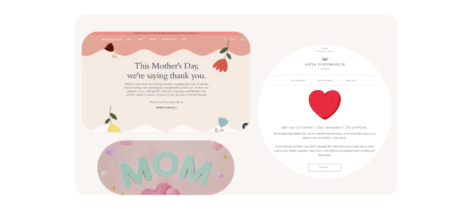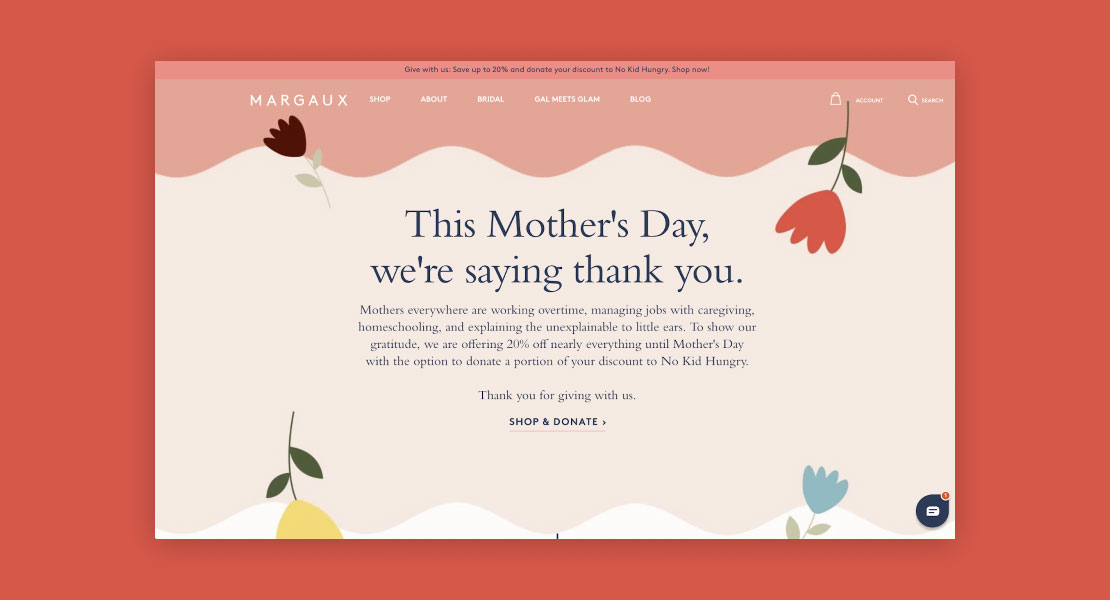Businesses are constantly seeking innovative strategies to capture the attention of their target audience and turn browsing into buying. This is where eCommerce personalization emerges as a game-changer, offering a tailored and immersive shopping experience that not only engages customers but also significantly increases conversion rates.
Join us as we explore the transformative power of eCommerce personalization and uncover the key strategies that drive successful conversions in the dynamic realm of online retail.
Benefits of Personalization in eCommerce
eCommerce customization has numerous advantages that can have a significant impact on the success of your online business.
Enhanced Customer Experience
Personalization allows you to create tailored experiences for each individual customer. By understanding their preferences, browsing history, purchase patterns, and demographics, you can deliver relevant product recommendations, personalized offers, and customized content. This improves the overall consumer experience, making it more engaging, convenient, and fulfilling.
Increase in Conversion Rate
Converting website visitors into paying customers is a crucial objective for every online company. Achieving this goal heavily relies on personalization, which empowers you to present customers with tailored products and offers that match their interests and requirements. In fact, research indicates that 80% of online shoppers are more likely to make purchases from businesses offering personalized eCommerce experiences. So, by embracing personalization, you have the opportunity to attract and retain more customers, ultimately boosting your conversion rate.
Reduced Shopping Cart Abandonment
Cart abandonment is a common challenge in eCommerce. However, personalized experiences can address this issue by understanding the reasons behind abandonment and offering relevant solutions. You can opt to send personalized cart abandonment emails, provide targeted discounts, or implement remarketing campaigns based on customers’ online behavior to encourage customers to complete their purchases.
Increased Average Order Value (AOV)
Personalization techniques can help boost the average order value by strategically suggesting complementary products, upselling, or cross-selling items based on the customer’s preferences and purchase history. It allows you to intelligently guide customers toward additional products they may be interested in, so you can increase the overall value of each transaction.
Improved Customer Loyalty and Retention
Personalization helps build strong connections with customers by demonstrating that you understand their preferences and care about their shopping experience. When you have a deep understanding of your customers’ desires and preferences, it becomes easier and more achievable to fulfill their expectations. As customer satisfaction levels rise, so does the potential for cultivating loyal customers and increasing retention. In fact, research indicates that 60% of consumers express a strong likelihood of becoming repeat buyers following a personalized shopping experience with a specific company.
Data-Driven Insights
Personalization is dependent on gathering and analyzing consumer information, which gives you important knowledge about their preferences, habits, and trends. As you get to know each of your clients on a personal level, you progressively put the pieces together that make up a cohesive, unique, and meaningful experience.
Leveraging Customer Data for Personalization
Leveraging customer data is a crucial aspect of effective eCommerce personalization. Here’s a closer look at how customer data can be leveraged for personalization:
Customer Profiling
Customer data allows you to create detailed customer profiles, encompassing demographic information, browsing behavior, purchase history, and preferences. You can leverage this data to acquire insights into your consumers’ interests, wants, and motivations and provide customized recommendations and focused marketing efforts.
Behavioral Tracking
Tracking customer behavior on your eCommerce website provides valuable data for personalization. By monitoring which products they view, add to their cart, or purchase, you can understand their preferences and tailor their browsing experience accordingly. Behavioral tracking also aids in the detection of patterns and trends, allowing you to make data-driven decisions to optimize your website’s layout, navigation, and product placement.
Purchase History Analysis
Examining customers’ previous purchases provides insights into their preferences, buying habits, and product affinities. This information can be used to offer personalized product recommendations, upsells, and cross-sells. You can use the customer history data to create targeted email campaigns or implement dynamic website content that promotes related products or accessories, ultimately increasing the chances of repeat purchases.
Segmentation and Targeting
Customer data enables you to segment your customer base into distinct groups based on shared characteristics or behaviors. Segmentation allows for targeted marketing efforts, personalized email campaigns, and tailored offers. When you deliver relevant content and promotions to specific segments, you can significantly improve engagement, conversion rates, and customer satisfaction.
Predictive Analytics
Advanced analytics techniques, such as predictive modeling, can leverage customer data to anticipate future behavior and preferences. Analyzing historical data patterns allows you to make predictions about which products customers are likely to be interested in, when they might make a purchase, or even their lifetime value. This, in turn, enables proactive personalization tactics, such as sending targeted recommendations or exclusive offers before customers even realize they need them.
Real-Time Personalization
Customer data can be leveraged in real-time to provide immediate personalization. By using technologies like website cookies and tracking pixels, you can dynamically adjust website content, display personalized product recommendations, or show tailored offers based on the customer’s current browsing session.
Real-time personalization creates a sense of individual attention and responsiveness, enhancing the overall online shopping experience. It is important to note that leveraging customer data for personalization must be done with care, ensuring compliance with privacy regulations and respecting customer preferences. Transparency in data collection practices and offering customers control over their data are essential elements in building trust and maintaining a positive relationship.
Customizing Product Recommendations
Customizing product recommendations is a vital aspect of eCommerce personalization that can greatly impact customer engagement and conversion rates. Let’s take a closer look at how to effectively customize product recommendations:
Collaborative Filtering
Collaborative filtering is a popular technique used to customize product recommendations. It compares a customer’s behavior with others who have similar tastes or purchase histories and suggests products that the customer is likely to be interested in. This method is effective when there is a substantial amount of customer data available.
Content-Based Filtering
Content-based filtering focuses on the attributes and characteristics of products to make recommendations. Through a comprehensive analysis of item content and metadata, encompassing factors like product descriptions, category tags, and attributes, you can effectively pair products that possess similar attributes to those previously preferred by the customer. This enables you to provide recommendations based on shared characteristics and enhance the personalized shopping experience. For example, if a customer has shown interest in leather shoes, content-based filtering can recommend other leather footwear options.
Hybrid Approaches
Combining different recommendation techniques can enhance the accuracy and relevance of personalized recommendations. Hybrid approaches often leverage a combination of collaborative filtering, content-based filtering, and other algorithms to create a comprehensive recommendation engine. This approach takes into account both customer behavior and product attributes to generate highly customized recommendations.
Real-Time Behavior Tracking
To provide dynamic and up-to-date recommendations, you can track customer behavior in real-time. Real-time behavior tracking analyzes a customer’s current browsing session, including pages visited, products viewed, and items added to the cart, and generates recommendations tailored to the customer’s current interests. This allows you to capitalize on the customer’s intent and increase the chances of a purchase.
Contextual Recommendations
Contextual recommendations take into account additional factors such as the customer’s location, time of day, or current weather conditions to make relevant product suggestions. For example, a clothing retailer might recommend summer outfits or beachwear to customers in warmer climates. Contextual recommendations enhance personalization by considering the customer’s immediate context and needs.
Cross-Selling and Upselling
Customized product recommendations can also be utilized for cross-selling and upselling purposes. By analyzing the purchase history of the customers, eCommerce companies can suggest complementary items or higher-value alternatives to enhance their shopping experience and increase the average order value. For instance, if a customer purchases a camera, a cross-selling recommendation might be to suggest camera lenses or a camera bag.
Personalized Email Campaigns
Product recommendations can be incorporated into personalized email campaigns to engage customers and encourage them to revisit the website. You can effectively utilize targeted emails by leveraging a customer’s browsing or purchase history. This approach enables them to showcase recommended products, spotlight new arrivals, or provide exclusive discounts through personalized email campaigns. Personalized email campaigns serve as a reminder and provide convenient access to tailored recommendations.
Analyzing and Measuring Personalization Success
Analyzing and measuring the success of personalization efforts is essential to understanding their impact on your business and optimizing your eCommerce personalization strategies. Below are some critical aspects to consider when analyzing and measuring personalization success:
Conversion Rates
Conversion rates are a fundamental metric to assess the effectiveness of personalization. Comparing conversion rates between personalized and non-personalized experiences helps you determine whether personalization efforts are driving higher conversion rates. Analyze conversion rates at different stages of the customer journey, such as product page views, cart additions, and completed purchases, to gain a comprehensive understanding of personalization’s impact.
Average Order Value (AOV)
Analyzing the average order value is crucial to measuring the success of personalization in driving larger transactions. When comparing the AOV between personalized recommendations and non-personalized experiences, you can assess whether personalization is effective in upselling or cross-selling additional products. A higher AOV indicates that customers are receptive to personalized recommendations and are more inclined to make larger purchases.
Customer Engagement Metrics
Measuring customer engagement metrics provides insights into how effectively personalization captures customers’ attention and encourages their interaction with your eCommerce platform. Analyze metrics such as click-through rates, time spent on personalized content, and bounce rates to assess the level of engagement and identify areas for improvement. Higher engagement indicates that personalization is resonating with customers and keeping them actively involved in the shopping experience.
Repeat Purchases and Customer Retention
Personalization plays a significant role in fostering customer loyalty and driving repeat purchases. Analyze metrics related to repeat purchase rates and customer retention to understand the long-term impact of personalization efforts. A higher number of repeat purchases and improved customer retention indicate that personalized experiences are effective in building strong customer relationships and encouraging ongoing business.
Customer Feedback and Surveys
Gathering direct feedback from customers through surveys or feedback mechanisms can provide qualitative insights into the perceived value of personalization. Understand customers’ satisfaction levels, their perception of the relevance and accuracy of recommendations, and their overall experience with personalized features. Incorporate customer feedback into your analysis to gain a holistic understanding of personalization success and identify areas for improvement.
A/B Testing
A/B testing is a valuable technique to measure the impact of personalization by comparing the performance of personalized experiences against non-personalized alternatives. Conduct controlled experiments where you divide your audience into groups, with one group receiving personalized experiences and the other group receiving non-personalized experiences. Compare the results of these groups to determine the uplift in key metrics, such as conversion rates or engagement, attributed to personalization.
Future Trends in eCommerce Personalization
Personalization continues to evolve and adapt to changing consumer expectations and technological advancements. Here are some future trends that are expected to shape the landscape of personalization in eCommerce:
AI-Powered Personalization
Artificial Intelligence (AI) and machine learning will play a significant role in enhancing personalization capabilities. AI algorithms can analyze vast amounts of customer data, identify patterns, and make real-time recommendations, further improving the accuracy and relevance of personalized experiences. AI-powered personalization will enable businesses to deliver highly tailored and dynamic interactions with customers.
Hyper-Personalization
Hyper-personalization involves the creation of individualized experiences based on real-time data and contextual information. It goes beyond basic customer preferences to consider factors such as location, device, browsing behavior, and even emotional states. Hyper-personalization leverages advanced algorithms and data points to offer customized content, recommendations, and offers, providing customers with highly relevant and engaging experiences.
Personalization Through Voice Assistants
With the increasing popularity of voice-enabled devices and virtual assistants like Amazon’s Alexa, Google Assistant, and Apple’s Siri, voice commerce is gaining traction. In the future, personalization in eCommerce will extend to voice interactions, allowing customers to receive tailored product recommendations, make purchases, and access personalized information through voice commands. Voice assistants will leverage customer profiles, preferences, and past interactions to provide seamless and personalized voice-based shopping experiences.
Augmented Reality Personalization
AR technology is revolutionizing the way customers experience products online. AR will play a significant role in personalization by allowing customers to virtually try on clothing, visualize furniture in their homes, or test cosmetics before making a purchase. Businesses that integrate data and preferences into AR experiences can deliver personalized AR content that enhances the customer’s decision-making process.
Social Media Personalization
Social media platforms continue to be powerful channels for customer engagement and discovery. Personalization is expected to extend to social media, where businesses can leverage user data, preferences, and interactions to provide personalized product recommendations, targeted ads, and seamless shopping experiences within social media platforms. Social media platforms will become key drivers of personalized product discovery and purchases.
Privacy and Data Transparency
As customer data privacy concerns grow, businesses will need to prioritize data transparency and user consent. Future trends in eCommerce personalization will focus on ensuring secure and ethical data collection, providing customers with control over their data, and being transparent about how personalization algorithms work. Trust and transparency will be crucial to maintaining strong customer relationships and complying with evolving privacy regulations.
Integration of Online and Offline Personalization
Seamless omnichannel experiences will become more prevalent in eCommerce personalization. Customers expect consistent and personalized experiences across online and offline touchpoints. Future trends will involve integrating customer data from various channels, such as in-store interactions, mobile apps, and website behavior, to create cohesive and personalized experiences that transcend individual channels.
The Bottom Line
As eCommerce continues to flourish, personalization becomes crucial to driving customer engagement and boosting conversions. Businesses can stay ahead of the curve and deliver personalized experiences that truly resonate with their customers by remaining agile, adapting to evolving customer expectations, and harnessing the power of innovative technologies, ultimately leading to business growth and success in the dynamic world of eCommerce.
With Justuno, you can deliver personalized experiences to every website visitor, starting from their initial interaction and extending throughout their journey. Try it now for free and see your conversion rates skyrocket!



